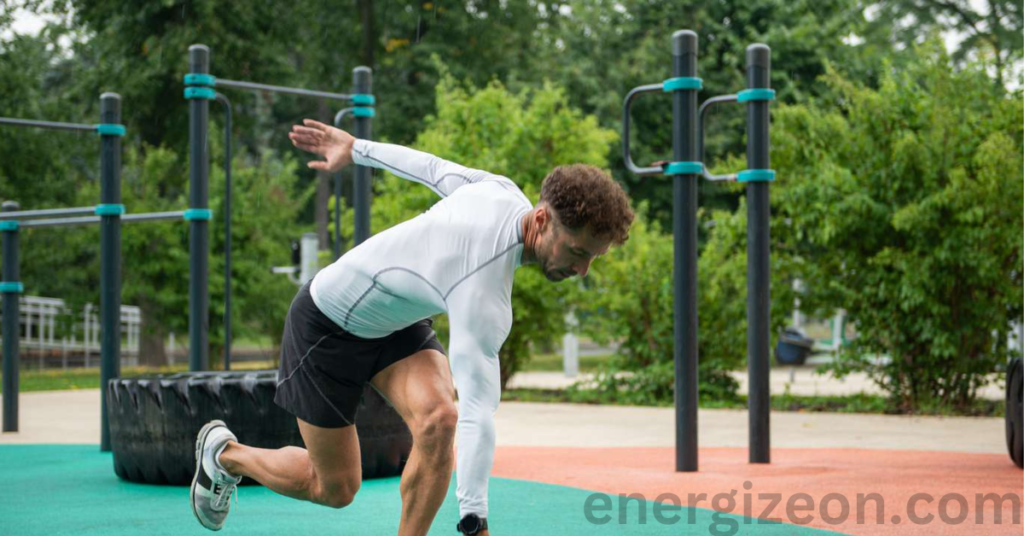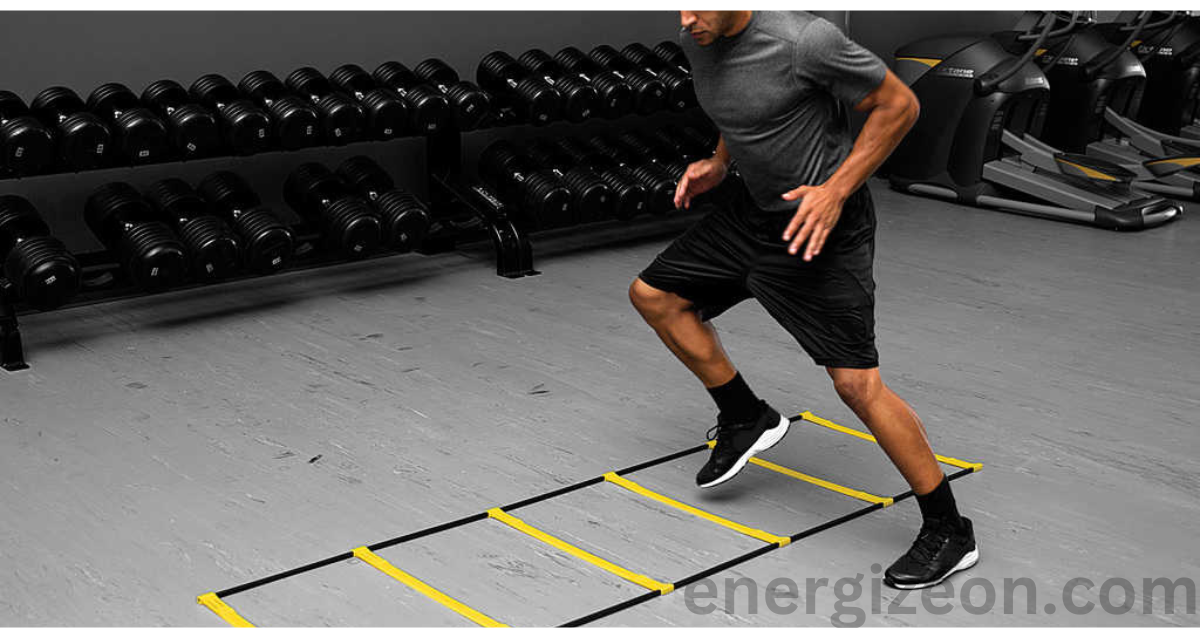Circuit training has received considerable interest in the recent past for professional athletes and other users of sports facilities as well as normal learner population. This type is specificity under which the training aims at enhancing the reactions of the body in terms of rapid and efficient movements. If you are an athlete wanting to improve your performance or a general person who wants to become fit and active, agility training is extremely useful.
What is Agility Training?
Agility training comprises activities that have the end to do with speed, coordination, balance, and reacting to certain stimuli. It involves power and speed, (power being defined as the ability to do work in a short space of time, and speed being more of an instantaneous affair than velocity). Though people usually practice agility training in basketball, soccer, or football, it is useful in dancing, martial arts, or even in daily activities.
Why is Agility Important?
Enhanced Performance: As for the athletes, agility training will improve the performance corresponding to the specific sport discipline. It also enables cutting to be faster, allowing for a faster sprint during a game besides enabling all movements to be more efficient.
Injury Prevention: When there is good foundational agility it significantly reduces the odd of people getting injured. Also, it helps in coordinating moments which will help in decreasing twist or fall incidences particularly in the elderly.
Functional Fitness: Agility training is practical as it employs motions we utilze in our ordinary day activities. This can help for example while performing errands, when playing with children, or while climbing stairs these become easier and safer to do.
Mental Sharpness: At first, agility training is not only a physical training activity but also can improve people’s thinking skills. The fast decision-making that is characteristic of agility training is highly effective at helping participants develop mental agility, which has application in all the spheres of life.
Key Components of Agility Training
Agility training typically incorporates several key components:
Speed Drills
In speed drills, you make efforts to make your movements quicker in some way. Examples of speed-promoting exercises include sprints, shuttle runs, as well as high-knee exercises. These drills entail performing some activities at a high rate for a short time then taking a break and doing the same for some time again.
Footwork Exercises
Body movement is important when it comes to balance and coordination. It is important also to make use of ladder drills, cone drills as well as dot drills when you are exercising in order to increase the aspects of your foot speed and coordination. These exercises involve making different patterns with the feet which in turn make you more agile.
Change of Direction Drills
These drills mimic the sudden changes of direction common in sport and movement in general life patterns. Zig-zag runs, T-drills, and box drills test one’s motion ability to be able to change directions effectively.
Plyometric Training
Plyometrics refer to activities that are characterised by sudden stretching and then hitting or throwing off some objects. Leaping squats such as jump squats, burpees, and box jumps exercise the body muscle fibers which respond quickly and make the motions quick and decisive. Training involving plyometric exercises can even go on to improve the athletic ability of any athlete.
Core Stability Exercises
Strengthening your core muscles is necessary if you are to be agile. Stability movements like the plank with your reach, Russian twists and medicine ball throws built up the muscle around the abdominal and back region giving support to the agile movements.

How to Incorporate Agility Training into Your Routine
Start with a Warm-Up
Interestingly, one must stretch before participating in agility exercises. A dynamic warm-up takes through light jogging, arm circles, and leg swings among other actions, and prepares your muscles and joints for the high-intensity physical activity ahead.
Create a Structured Plan
It is very important for both novice and professional to have a schedule. Ideally you should be performing agility training exercises at least twice and preferably three times per week. Every exercise session can range from 20 minutes to an hour depending with the individual’s fitness level and exercise regime.
Mix Up Your Drills
Avoid getting bored and at the same time, in order to gain full advantages, switch around your drills. These include speeding drills, foot works together with plyometric movements in every session. This variety ensures that your body is alert and reduces cases of getting bored or tired.
Monitor Your Progress
Record your performance on the issue being discussed. Times of sprints, number of successful trial repetitions of the drills, and a general fitness improvement. Apart from being inspired to work harder, monitoring your progress is a way of making sure that you are not lazy somewhere.
Cool Down and Stretch
Surely after your agility session, you should warm down. Flexibility is enhanced through static stretching in addition to enhancing biological recovery. Paying more attention to the principal muscles that were participating in your training is advisable.

Tips for Successful Agility Training
Stay Focused: One thing about agility training is that it needs concentration. They should be conscious of their movements in order to gain the most effect while minimising danger.
Use Proper Footwear: Choose a good running shoe to offer you support and firm ground to walk on. In this case, footwear can improve your performance and minimise your chance of getting harmed.
Listen to Your Body: Fatigue and changes in appetite are not uncommon, but pay attention to signals that your body is giving out. After some time you may start to feel sore or uncomfortable; you should stop and review your form or the kind of exercises you are doing.
Stay Hydrated: The main nutritional need that has been often mentioned is the importance of drinking plenty of water. Make sure you hydrate sufficiently before, during and after you training sessions to ensure you are a focused individual.
Incorporate Rest Days: Says the sports writer evolved the spectacle of agility training can be rigorous at times. Cool down your body with rest days. Light exercise such as walking or a gentle form of yoga should be done on the days when we are taking HIIT.
Common Mistakes to Avoid
Neglecting Technique: Do not worry about how quickly one is getting through the moves. It can be dangerous sometimes and at the same time the effectiveness of the training also slows down.
Over training: Again, the section needs to be kept consistent but regularity might lead to more exhaustion or injuries. Work hard, but don’t forget to take breaks.
Ignoring Warm-Up and Cool Down: Failure to warm-up or cool-down has implications for increasing the risk of injury. It is important always to schedule for such basic parts.
The Mental Aspect of Agility Training
Agility training therefore is not a do-or-die affair, it is more of physical and mental training. One of the impressive skills learned while participating in athletic events is how to use your brain and how to make crucial decisions at the right moments. Other additional stimulating activities that can also hone this ability include imposing specified drills involving operation and decision based on stimuli of vision or hearing.
Conclusion
Sport-specific agility training can be used effectively by a number of people who wish to enhance their health and performances. This means, if you were to introduce speed drills into your practice, footwork exercises, and plyometric training, then you are bound to make that leap. It is important to pay especial attention to the technique, drink enough water, and follow your body’s lead for the best results of agility training journey. Anyone from an athlete to a regular person wanting to become more active enjoys the benefits of agility training that takes you to the next level. Don’t shy away from a challenge, take it as an opportunity for you to grow your capabilities even further!
What is agility training?
Agility training involves exercises that enhance your ability to move quickly and change direction effectively, improving speed, coordination, and balance.
What are the benefits of agility training?
Agility training improves athletic performance, enhances injury prevention, boosts functional fitness, and sharpens mental focus and decision-making skills.
How often should I do agility training?
Aim for 2 to 3 sessions per week, allowing time for recovery and incorporating a variety of drills to keep your workouts effective and engaging.

